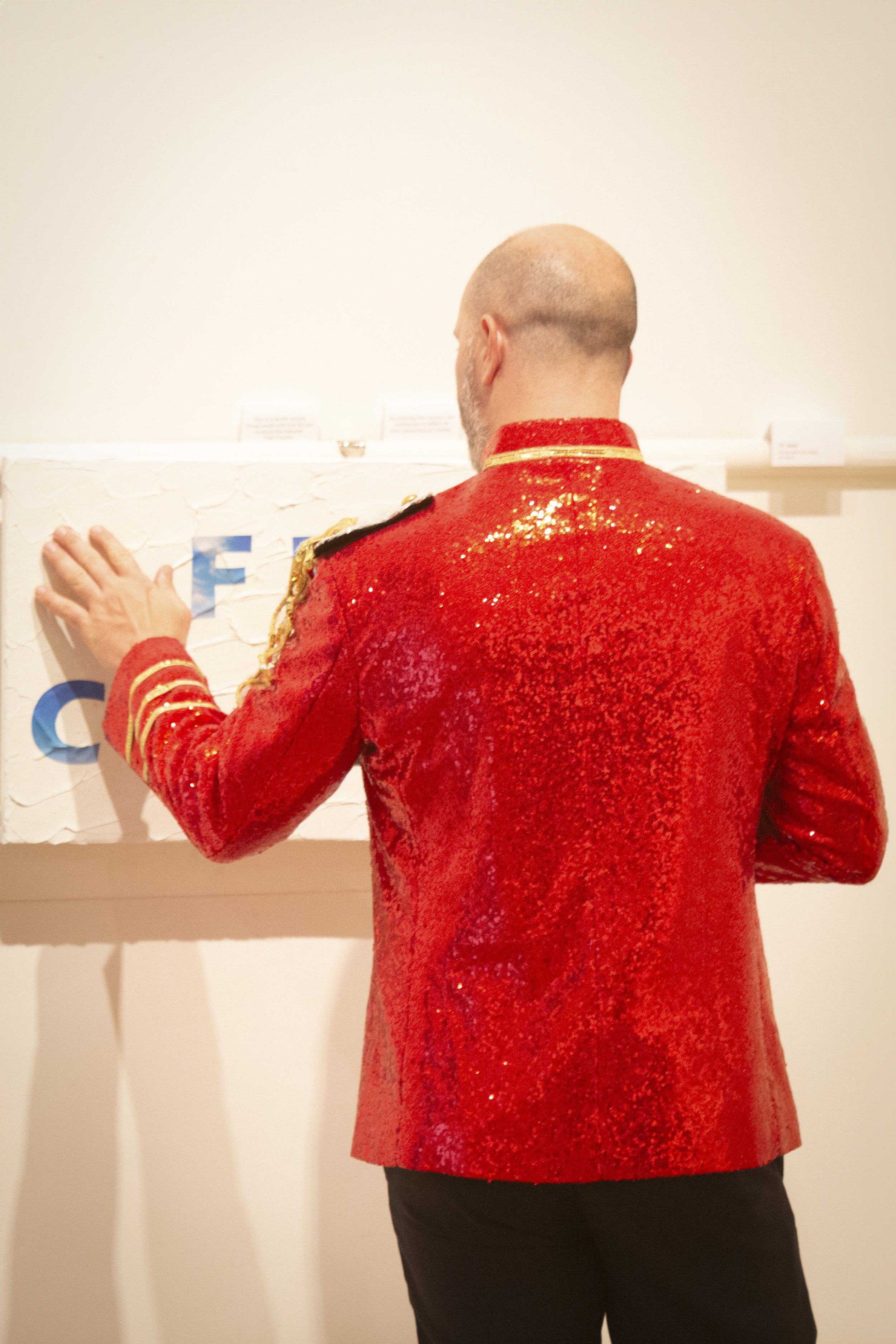The Reclamation of Terra, 25th January 2024, by Teague Leigh.
I had the honour of inviting Yin Paradies to the Gala Exhibition Opening of my multimedia series, The Reclamation of Terra. I was so moved by his words, that I wanted to share them with you.
Yin Paradies Bio:
Professor Yin Paradies (he/him) is an animist anarchist activist Wakaya man who is committed to understanding and interrupting the devastating impacts of modern societies. He seeks mutuality of becoming and embodied kinship with all life through transformed ways of knowing, being and doing. Yin is Chair in Race Relations at Deakin University where he conducts research on racism and anti-racism. He also teaches and undertakes research in Indigenous knowledges and decolonisation. Yin has authored 250 publications, been awarded grants worth $49 million, is an invited reviewer for more than 125 journals and has been cited 18,500 times.
Guest Speech by Yin Paradies:
What is the meaning of art? What is art for? These are just one of many misguided musings that we tend to ask in modern societies, along with what is the meaning of life and what happens after you die? It has even been said that all language, art and science are a diminishment of the human condition. Evidently, if such is the case, then questions themselves are a pointedly undignified feature of language. In fact, questions, are quite rare in primal or Indigenous cultures that came before modernity, colonisation, patriarchy, capitalism etc. Despite this, I will be asking a lot of questions in the next few minutes.
If you pay attention (which is very unusual these days), you may notice that art is not so much about inner moving as it is about inner stilling. While entertainment is about neutralising numbness through novelty, art embodies the ineffable and immanent rather than the exciting or arousing. About taking your breath away rather than heavy breathing. A rupture of the mundane towards a rapture of the magical and mysterious, evoking awe and reverence.
This exhibition clearing involves mixed modal art, one of which is photography. Photography is obviously a very new form of human artistic expression, barely more than two centuries old. Some consider photography to be a ‘lesser’ form of art, more capturing than expressing. A bit too popular with tourists to be a ‘higher’ pursuit as well as, perhaps more in video form these days, a much-utilised apparatus of the state and foundational expression of the spectacle. Certainly, there is a danger in being represented and replaced by the image, in being distracted by abstractions.
It is also true that we would do well to engage with more than the visual, attending to the tactile, tangible, haptic and kinaesthetic; as we sense into the polyphonic worlds we are immersed in and the titanic forces that we are merely extensions of. To remember that we are reverent receptacles for the swirling spirits of serendipity.
Nonetheless, I feel that photos can be, and are in Teague’s work, prisms through which to perceive our larger selves. Not as yet more stimulation that never satisfies, but as an arresting, a stilling, a silencing that behoves us to heed the kaleidoscope already right in front of our noses. Photography as an invitation to closeness of experience rather than as an object to consume. Unique textural (not textual) sensorial portals to infinity. A way to practice deep listening where we see with our ears and hear with our eyes. Allowing us to glimpse-listen to the primordial purr of cavernous entities lurking beneath the quotidian humdrum.
Perhaps art that invokes Country allows us to still our frenetic flow of thoughts and feelings just for a moment so we can see our larger, more expansive, selves reflected in the lagoon of life. So that we can be reminded that whatever we do to the lattice of life we do to ourselves and whatever we do to ourselves we do to the lattice of life.
Darren Allen has said that “the empty soul must photograph for the same reason the narcissist must regard himself in every passing mirror or window”. What if, instead, vivid visceral visuals of Country reflect back to us our own faces as one of the many facets of creation. As Sophie Strand has said, “a face rippled by a fish disturbing the silt below…a face turned iridescent by a dragonfly wing skimming the surface of the water.”
What if we are not being asked by Country to ‘fight for’, ‘save’ or even ‘change’ the world, but instead we are here to profoundly feel and belong ever more deeply within creation. To seek meaningful mutuality of becoming and embodied kinship through radical intimacy and transformed ways of knowing, being and doing that are grounded in wisdom, humility, respect and generosity.
Here is Sophie Strand again: “What if the emergency of our situation does not call for the manic techno-narcissistic death dance of trying to “fix” the world. It calls for slowing down. For sitting next to the pool. And looking into the water. If we are lucky, we will see ourselves…we will see that we are in the pool. We are not outside of the life forms that we are damaging and polluting. We are intimately of them. The real narcissism is to believe we can stand apart [physically,] philosophically, or morally. And yes, let us, like Narcissus, fall in love with this more complex reflection. A reflection that contextualises our being inside of, and” interdependent with all life.
Yin Paradies, by Tom Noble. @NobleTomNoble

